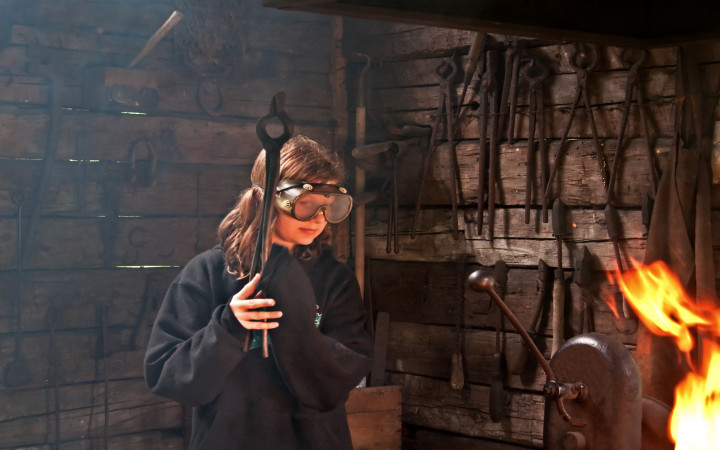Today’s Wonder of the Day was inspired by Spencer . Spencer Wonders, “How can you forge?” Thanks for WONDERing with us, Spencer !
Quick! Grab a piece of metal. It can be any piece of metal—a fork would even work. Just find the closest object to you and hold it in your hands. Okay, now concentrate. Hold the metal firmly.
Now, bend it! Turn it into something new. Shape the metal into a flower, a diamond, or even a big circle. Be imaginative! Turn that piece of metal into anything you’d like.
Wait, what? You can’t shape the metal? It’s too strong to bend? Oh, we forgot to tell you! Before you can turn that metal into something new, you’ll need your own forge.
“Forge” refers to a couple of different things. Sometimes, it’s what people call a blacksmith’s workspace. Blacksmiths are people who make things with metal, usually iron. And to do that job, blacksmiths use a hearth that heats their materials. This hearth is also called a forge.
Okay, so now you know what a forge is. But how exactly does it work? Think back to what it was like trying to bend that piece of metal. If you had something small, like a paperclip, it probably wasn’t too hard. But any metal much sturdier than that is pretty unwieldy. In order to work metal, blacksmiths have to heat it first.
The forge itself can work in a few different ways. Picture a fireplace or wood-burning stove—a forge looks a lot like that. For heat, many forges use coal. To work a coal forge, a blacksmith will also need bellows to force air into the fire. Other forges use gas or solar power.
Once the forge is heated using one of these energy sources, it’s time to get to work. The blacksmith holds the metal using a pair of tongs and heats it up in the forge. Then, they hold the metal over a large anvil and hit it with a hammer, shaping it into the desired form.
For thousands of years, blacksmiths made just about every metal object needed for daily life. They made hammers, nails, and screws used for building. They created plows for farmers, weapons for soldiers, and shoes for horses. Blacksmiths even made all the metal household items, like candlesticks and utensils, for everyday people.
After the Industrial Revolution, forging changed. The development of the steam hammer and other technologies have made forging a largely automated process today. However, some people still practice traditional forging as both a career and a hobby.
Would you like to learn to use a forge? Maybe you could become a blacksmith’s apprentice! They can teach you how to safely heat and work metal to make something that’s both useful and beautiful.
Standards: C3.D2.His.2, C3.D2.Civ.3, NGSS.PS1.B, CCRA.L.3, CCRA.L.6, CCRA.R.4, CCRA.R.1, CCRA.R.2, CCRA.SL.1, CCRA.W.3, CCRA.L.1, CCRA.L.2




